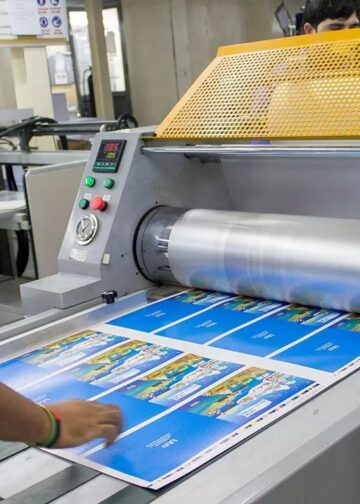There are many purposes that lasers serve. For instance, metal plates are cut by lasers. Excellent quality of products is obtained from laser cutting since the process is very accurate on stainless steel, aluminum plate, and stainless steel. The items are cut into unique shapes that have tiny holes. The name “LASER” stands for Light Amplification by Stimulated Emission of Radiation.
Laser-cut panels come in a variety of shapes and designs in metal or wood form. The items produced serve the cabinetry, senior living, hospitality, and residential design sector. Both traditional and contemporary designs are incorporated over various projects. These laser cut panels’ dramatic and functional design provides interior designers, architects, and fine woodworkers with design solutions that align with their expectations. Below is an overview of the laser cut technology.
Is Laser Cutting Real?
When it comes to this kind of technology, materials are vaporized using a laser, thus producing a cut edge. Laser cutting is applied in the manufacturing industry and is currently used by small enterprises, schools, and hobbyists. Laser cutting uses optics to direct the output of a laser with the highest power.
What is Laser Vaporization Cutting?
Laser vaporization cutting involves heating the workpiece through high densities of high energy to increase the temperature rapidly. Materials vaporize with time since the temperature gets to boiling point after some time.
How much it Costs To Run a Laser Cutting Machine
A laser cutting machine is a worthy investment to make if running a small or large business. This feature usually comes in handy when engraving or cutting various materials from ceramics, plastics, or glass. Before you invest in a laser machine, you should familiarize yourself with some financial outlook to correctly select the model that will suit your needs.
The engraving process is slower than cutting, even though less power is used during the engraving process, unlike cutting which uses more energy. Hence, both have benefits when it comes to consumables. A laser cutting machine is estimated to use 51 pence hourly, while 25 pence is used hourly by the CO2 laser engraving machine. All this is put into consideration; the profit made after adding them up cancels the other out.
To effectively communicate and perform tasks, a PC is used by laser cutting and engraving machines. This aspect helps us consider how much power is consumed since the laser cutting, 2140VA, is used by engraving machines while an average PC uses 800VA. Additionally, 2140VA is used by the CO2 engraving machine.
Maintenance costs should also be put into consideration when investing in a cutting machine. Weekly cleaning is supposed to be carried out, and daily maintenance shouldn’t take more than 15 minutes. Materials are used to determine the amount of cleaning required, and at times, the machines are realigned since the lenses or mirrors require a delicate clean. If the device is well maintained and clear, much time is not wasted on simple upkeep since it will be ready for subsequent use.
One hour is spent on realignment and cleaning the machine’s mirrors and lens though it does not affect its production since all these can be done after working hours. Choosing to invest in a laser machine appears to be economical when all financial aspects are considered. In addition to that, the business’ profit increases since the company can produce a wide range of products for its potential clients.
Advantages of Laser Cutting
Speed
Unlike conventional methods of cutting, laser cutting is swift, especially when composite cuts are involved. Laser is faster compared to thermal methods of cutting with a thickness of around 10mm. The strength of the laser cutter boils down from the same advantage point.
Flexibility
When it comes to laser cutting, each separate tool doesn’t require a variety of devices. A variety of shapes can be cut within the same thickness using a similar setup. Additionally, no problems arise from intricate cuts.
Quality
During the cutting process, the cutter leaves a tiny burr under the correct setup. Displacing it is not even necessary. Similarly, when the microstructure changes, the results in heat zones slightly get affected because the dedicated sections besides the HAZ are changed.
Automation
Since the laser cutting machine is automatic, fewer human resources are required to carry out the job. Even though fewer human resources are needed, a machine operator has to oversee the final quality.
Precision
Compared to other thermal cutting methods, laser cutting is very accurate, making it the main advantage of laser cutting. High precision of accuracy of +/=0.1 mm is achieved without any treatment done afterward. This factor means no additional tolerances are required when it comes to such a high standard.
Facts about Laser Cutting
The thickness of metal is limited to a specific size
Very thick plates are not best cut by the laser machine since thermal cutting methods are suitable for such items. The available machinery plays a vital role in identifying the right thickness. Up to 15 to 20 mm is consumed by companies that deal with metal fabrication.
Upfront Costs
Compared to plasma cutters and water jets, a laser cutting machine is costly even though the efficiency and the running costs make up for it.
Need of expertise
For one to extensively produce quality work, a specialist operator is required. For the standard consumer to be satisfied with this technology, the cutting quality has to be prioritized using the correct setup.
Types of Laser Cutting Used for Sheet metal
The two types of lasers currently used globally when cutting sheet metal are fiber and CO2. The CO2 lasers use an electric discharge which is electrically pumped into it. It is produced from various gases, consisting of nitrogen, helium, and carbon dioxide (CO2).
Fiber lasers belong to a family known as the ‘solid-state lasers.’ A solid medium produces the beam in its solid state. Disk lasers, fiber lasers, and Nd: YAG lasers belong to the same category. A sequence of laser diodes produces a fiber laser beam which is eventually amplified after being transmitted via an optical fiber.















